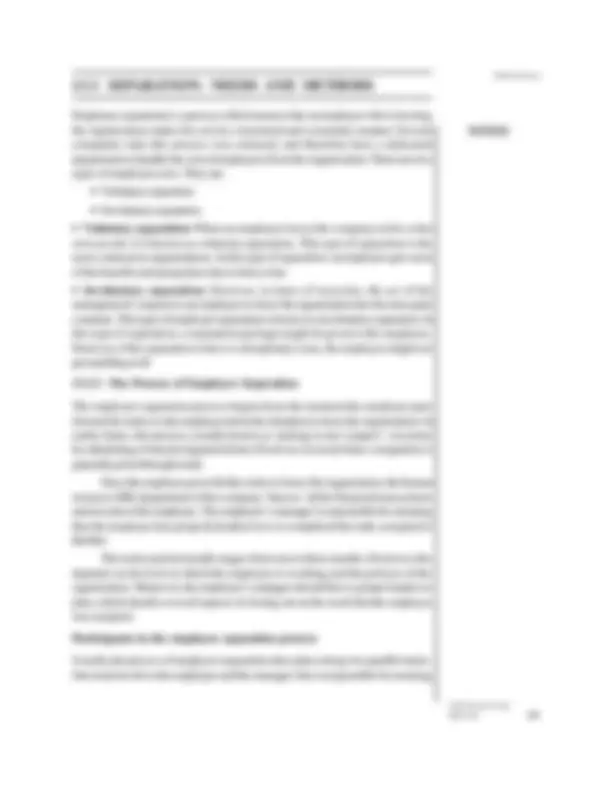



Study with the several resources on Docsity

Earn points by helping other students or get them with a premium plan


Prepare for your exams
Study with the several resources on Docsity

Earn points to download
Earn points by helping other students or get them with a premium plan
Community
Ask the community for help and clear up your study doubts
Discover the best universities in your country according to Docsity users
Free resources
Download our free guides on studying techniques, anxiety management strategies, and thesis advice from Docsity tutors
Human Resource Management (HRM) is a strategic and comprehensive approach to managing people within an organisation. It involves recruiting, hiring, training, evaluating, and rewarding employees to maximise their performance and align with the organisation’s goals. HRM also ensures compliance with labour laws, fosters a positive workplace culture, and supports employee development and well-being. By managing workforce planning, performance, compensation, and employee relations, HRM plays a vital role in organisational success. In today’s dynamic business environment, HRM is increasingly data-driven and aligned with long-term strategic planning, making it an essential function in both large corporations and small enterprises.
Typology: Lecture notes
1 / 2

This page cannot be seen from the preview
Don't miss anything!


Trade Unions
Self-Instructional 158 Material
13.2.3 Workers Participation in Management
Workers’ participation is a broad concept. It has been differently viewed by sociologists, psychologists, economists and lawyers. Sociologists view workers’ participation as an instrument of varying potentialities to improve industrial relations and promote industrial peace. Psychologists consider participation as a mental and emotional involvement of a person in a group situation which encourages workers to share managerial responsibility. Being a dynamic subject, no rigid limits can be laid down for workers’ participation for all industries and for all times. It can be elastic enough to include workers’ representation even at the top level, namely, board of directors. It can also be confined to the extremely limited domain of consultation at the lowest level such as ‘to promote measures for securing and preserving amity and good relations between the employer and workmen and to that end, to comment upon matters of their interest or concern and endeavour to compose any material difference of opinion in respect of such matters.’ Workers’ participation in management has been classified into five stages. These are informative, consultative, associative, administrative and decisive participations, the extent of each depending upon the quality of management and the character of the employee. K.C. Alexander has, however, suggested different modes of workers’ participation, viz. (i) collective bargaining, (ii) joint administration, (iii) joint decision- making, (iv) consultation, and (v) information sharing. According to Kenneth F. Walker, various forms of workers’ participation in management are ascending participation, descending participation, disjunctive participation and informal participation. In ascending participation, workers may be given an opportunity to influence managerial decisions at higher levels, through their elected representatives to works committee, shop or joint council or board of the establishment. In descending participation, they may be given more powers to plan and make decisions about their own work. They may participate through collective bargaining. They may also participate informally, when for example, a manager adopts a participative style of supervision of workers. These and other forms of participations have played a significant role in transforming the scope and concept of workers’ participation.
Check Your Progress
Self-Instructional Material 159
Trade Unions
Employee separation is a process which ensures that an employee who is leaving the organization makes his exit in a structured and systematic manner. Several companies take this process very seriously and therefore have a dedicated department to handle the exit of employees from the organization. There are two types of employee exits. They are:
Voluntary separation Involuntary separation
Voluntary separation: When an employee leaves the company on his or her own accord, it is known as voluntary separation. This type of separation is the most common in organizations. In this type of separation, an employee gets most of the benefits and perquisites due to him or her.
Involuntary separation: However, in times of recession, the act of the management’s request to an employee to leave the organization has become quite common. This type of employee separation is known as involuntary separation. In this type of separation, a separation package might be given to the employee. However, if the separation is due to a disciplinary issue, the employee might not get anything at all.
13.3.1 The Process of Employee Separation
The employee separation process begins from the moment the employee puts forward his notice to the employer about his intention to leave the organization. In earlier times, this process, usually known as ‘putting in one’s papers’, was done by submitting a formal resignation letter. However, in recent times, resignation is generally given through email.
Once the employee gives his/her notice to leave the organization, the human resource (HR) department of the company ‘freezes’ all the financial transactions and records of the employee. The employee’s manager is responsible for ensuring that the employee has properly handed over or completed the tasks assigned to him/her.
The notice period usually ranges from one to three months. However, this depends on the level at which the employee is working and the policies of the organization. Moreover, the employee’s manager should have a proper handover plan, which should cover all aspects of closing out on the work that the employee was assigned.
Participants in the employee separation process
Usually, the process of employee separation takes place along two parallel tracks. One track involves the employee and the manager who is responsible for ensuring